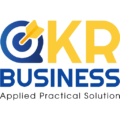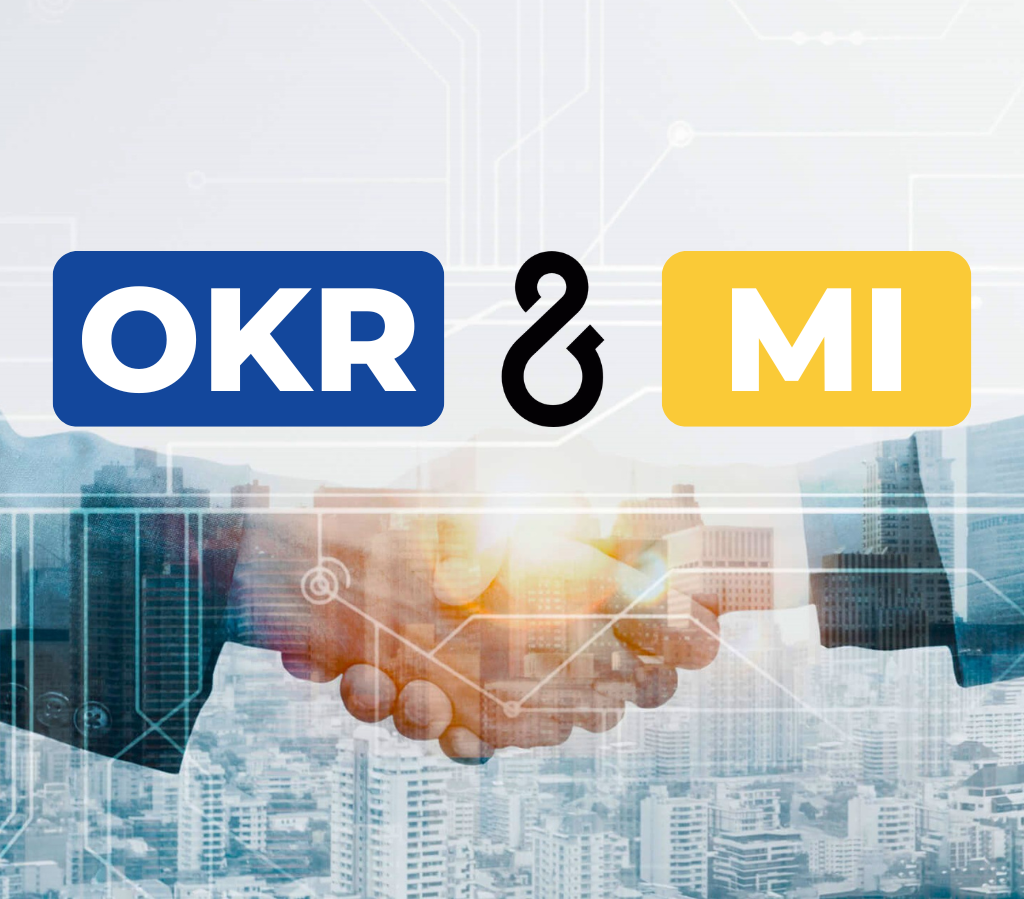The more successful a company is, the more it has to consider and implement to maintain its current position. And as work piles up, strategic plans tend to stomp on each other, even delaying or cancelling to have more time and resources to deal with more urgent activities. Day-to-day administration engulfs the entire management team and staff in the troubleshooting reel, attending last-minute customer meetings, resolving customer complaints quickly… Over time, the team gradually detached and increasingly distanced it from the mission and the desire was initially established. In the end, everyone loses their vision of the good direction the business is aiming for or even asks themselves: “What are we doing here? Why do these take up all the time and effort of the whole team?”
For most of us, the work is not only to be done but also to serve a higher goal. We have a desire for purpose, motivation and passion in our work (really, in every element of people’s lives). OKRs, also known as Key Goals and Results, is a system that provides a clear awareness of the direction of the entire team and a strong motivation for all members, from their leaders and employees. Basically, OKRs help people understand where the team is going, where they will go and what they can achieve in the future.

So, what are OKRs really? There are many different definitions but will be of the same nature as follows:
OKRs are a method of setting up and managing goals, focusing on goals by unsusing what all members put to the highest priority and allowing the entire organization to focus on accomplishing.
Consists of two parts: (1) Goals or what you are trying to achieve; and (2) Key results or how you know you’ve achieved your goals. You should aim for two to three goals per quarter, and they must be specific, time-bound, and measurable. Each goal should have three to five key results, which should be carefree dosing measurements or the Boolean method of setting a goal.
Sure, you can have more than three goals and more than five main results. But the more you have, the harder it is to focus on what really matters. Not all the main goals and results are equally weighted, and by making a list of each goal longer, we can distract ourselves from what can be accomplished instead of what really has to be.

So, for example, if the goal is: To be the best customer service in the target market, here’s what your key result might be and what setting up an OKR for that goal might look like:

Ideas are an integral part of an organization that operates with OKR, teams and individuals who know what success needs to be achieved and how to measure it clearly. Originally created by Andy Grove, the former CEO of Intel, the OKR methodology was popularized by venture capitalist John Doerr in his book Measure What Matters: How Google, Bono and Gates Foundation Rock the World with OKRs and is now widely used in the world’s leading companies such as LinkedIn, Netflix, Anheuser-Busch, Deloitte, Adobe… As evidenced by the success of these companies, we can be confident that OKRs are truly significantly effective.
How is OKR different from other goal setup systems?
Of course, there is other common management according to target systems (MBO), such as SMART targets and KPIs. However, each method is very different from OKRs.
Smart goals are a guide to help people create and write the right goals. Finally, SMART’s guidelines show that goals must be specific, measurable, achievable, practical, and time-related – unlike tutorials for writing goals within the OKR framework. However, the SMART goal does not provide metrics to know if you have achieved those goals or in OKR terms, the main result. So, while you can use smart goal guides to create good goals, you need OKR frameworks to help set, adjust, measure, and continuously improve your organization’s goal set up in the long run.
KPIs are metrics used to track activities, systems, and processes in your organization. These include things that are used to evaluate performance such as uptime, conversion rate, or average request response time. KPIs differ from OKRs at OKR levels that cover all strategies, orientations, measurements, and purposes, while KPIs are only really related to pure measurement. An organization may have 100 KPIs but without additional guidance, the inherent KPIs won’t tell you what’s really important to optimize. However, KPIs that fit the OKR framework are great key results!
For example, if a key result for the Customer Satisfaction Improvement goal is to Increase promotional awareness by 10% in the next quarter, Increasing management awareness will now be your KPI. In these ways, both SMART and KPI targets can be extremely useful to combine within the OKR framework, but they do not provide adequate images or systems for continuous self-improvement.
How do you implement OKRs?
Although OKRs are simple to understand, they are not necessarily easy to implement. Businesses need to carefully consider how OKRs will work in their culture, and business leaders need to consider how they will spend time on strategy. Without a foresee and planned to look, the OKRs framework could conflict with the company’s culture and expectations and quickly be eliminated as just another management fad.
Even with a strategic perspective, there will be no single path to implement OKRs. For some businesses, a phased pilot or implementation program works best; for others, it is better to work with an external coach or mentor to establish the movement process. In practical experience, guided deployment and facilitation gives teams the best opportunity to deploy OKRs efficiently and achieve their goals. Let’s see why:
- Facilitating guidance ensures the process is truly completed, reflected, and continuously improved.
- All opinions can be judged equally to find common ground and disagreement. Having an unbiased third-party observer makes it easy to draw on what’s really best for the company instead of what’s best for the individual – even what might be best for the INDIVIDUAL CEO.
- Facilitating guidance also helps organizations celebrate progress, rather than insisting on perfection. It moves the conversation out of the personal realm, where “Why don’t you achieve your goals?” becomes “What barriers are preventing us from achieving our goals?”
Here’s a sample framework for the OKR journey that any organization can work with:
- Conduct discussions with the executive team and senior leaders to narrow potential goals for the next quarter.
- Gather feedback from everyone in your organization about what your goals should be next quarter. Especially including the level of deployment staff.
- Conduct sessions with the entire organization to go to a set of common unified goals.
- Set key results for those goals.
- Set up an organization-global dashboard with important indicators for key results.
- Groups and individuals from which to set up their own OKRs.
How long does it take to develop and implement OKRs?
Most organizations use a combination of both annual OKRs and quarterly OKRs. These inter-dynamic and tiered locks, so that by fulfilling our quarterly goals, we advance our annual plans.
There is no exact or incorrect timeline for setting up OKRs—it will largely depend on the number of employees. Larger companies need more time, while smaller ones can move faster. In both cases, the full process can take four to six weeks, ideally before the start of the upcoming quarter. This lead time allows for feedback and makes changes if necessary. As we work with clients, this is the typical OKR timeline for what larger companies look like:
- 6 weeks ago quarter: The goal needs to be invested in thinking.
- 3 weeks before quarter: Choose a goal for the upcoming quarter; start editing and select key results.
- 2 weeks before quarter: Announce targets for the entire organization for the upcoming quarter.
- Quarter begins: Repeat OKRs for the entire organization; groups and individuals drafting their own OKRs.
- 2 weeks in quarter: Groups and individuals publish their OKRs for the rest of the quarter.
- Quarter begins: Repeat OKRs for the entire organization; groups and individuals drafting their own OKRs.
- 2 weeks before quarter: Announce targets for the entire organization for the upcoming quarter.
- 3 weeks before quarter: Choose a goal for the upcoming quarter; start editing and select key results.
Regardless of the correct timeline, organizations that set OKRs should always apply the following principles:
- Consider and debate with the ultimate goal of the business. The OKR process should not be rushed. Accelerating through the planning process increases the risk of doing the wrong thing.
- It involves many views. To create the highest efficiency, include everyone in the OKR process and allow the best ideas to come out on top.
- Clarify processes, timeframes, and expectations. Different levels of organization from CEO, Manager, and individual —each level will take time to review and build their own OKRs based on feedback from people at the upper and lower levels. Make sure people understand the purpose of the exercise and how to fully understand it.
OKRs create common ground
These principles create similarities, in common throughout the group: “In fact, the similarities of operational values, priorities and interests – how an organization works together – are imperative if progress in management style occurs. Without that in common, an organization can easily be confused and lose its sense of purpose.”
What an organization receives is the reason behind setting up OKRs. This is not just about achieving goals and pushing goals forward in a real, measurable way. It’s about driving your teams behind the similarities of priorities – a “sense of purpose” – to trigger their participation in the work and the overall growth and forward movement of the organization. There are goals that are clearly defined and shared with the participation of the whole team with the desire to develop together. OKRs are the solution to make that happen.




